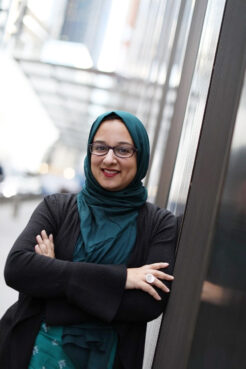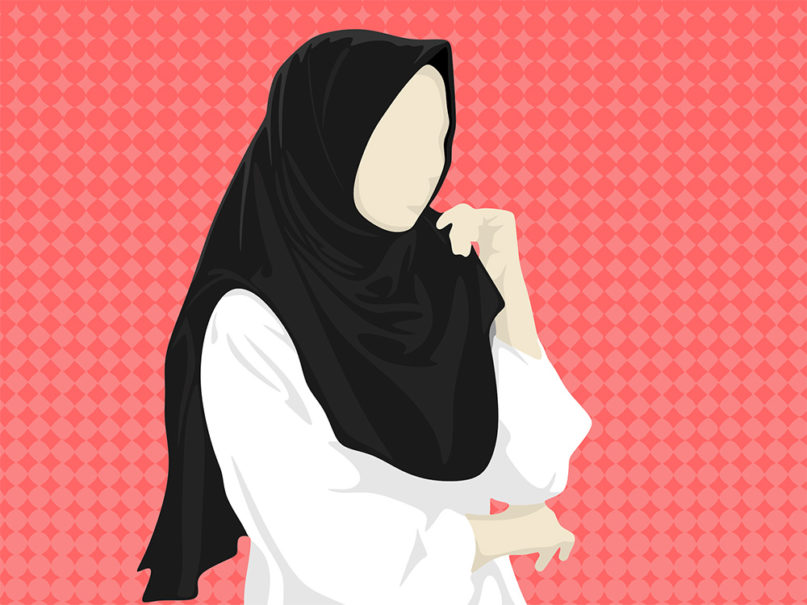(RNS) — A Muslim woman living in France, parts of India or Quebec, in Canada, who publicly wears the hijab is faced with all manner of restrictions, if not outright bans, under a variety of laws and governmental decrees. A Muslim woman living in Iran or Afghanistan, on the other hand, is mandated to wear the Islamic head covering under penalty of arrest, imprisonment or worse.
Either way, the freedoms and choices of Muslim women are being denied, too often resulting in violence or even death.
It’s been nearly two weeks since 22-year-old Mahsa Amini, a young Iranian woman, died in police custody after being arrested for “improperly” wearing her hijab (some of her hair was showing) by the country’s infamous “morality police.” Several reports say she was beaten severely by members of the morality police during her arrest and transfer to the Vozara Detention Center. She fell into a coma at the center and died Sept. 16.
Iranian authorities claim she died of a heart attack, but others in the country suggest her death resulted from alleged torture and violence, according to a United Nations report, which calls for accountability and an investigation into Amini’s death.
RELATED: The death of Mahsa Amini in Iran demands consequential diplomacy by US
Since her arrest, scores of Iranians have declared that they have had enough, with more than 40 dying and dozens more arrested in the past several days of protests and clashes with police.
In the days since, protests have rocked Iran, with thousands of city residents taking to the street and Muslim women publicly tearing off their hijabs and burning them. The demonstrators are going beyond the question of the hijab to call for an end of the morality police and other repressive systems. Iran has brutally cracked back.
As Hoda Katebi, an Iranian American writer and community organizer, wrote in a recent op-ed, this current wave of anti-hijab protests is unprecedented in Iranian history. “This is not about Islam or enforcing ‘morality’ but about enforcing state power. … A huge number of Iranian civil society groups, including teacher collectives, worker unions, reformist political groups and religious clerics, have come out with statements demanding the abolition of the morality police.”
But at the heart of the regime’s oppression is its focus on controlling women. Amini’s death comes “amid an intensification of repressive state policies under the Raisi administration that have targeted women in particular. Last month authorities announced they would aggressively crack down on what they consider violations of hijab rules, from showing hair to ‘bad makeup.’”
When Muslims teach their children about Islam, they generally start with the five obligatory pillars — shahada (testament of faith), salah (prayer), zakat (almsgiving), sawm (fasting) and hajj (pilgrimage). Hijab and modest dressing (for women and men), which is laid out in the Quran, is not one of them. No matter what one believes about hijab being fard (obligatory) for women (you’ll find arguments for or against), this visible representation of Muslim faith is an intensely private act between a woman and Allah.
If Iran is concerned about Islam, why not police whether a Muslim woman has done her five daily prayers or gives zakat or if she fasts in Ramadan? Because this is not about Islam, and because those acts are virtually unseen in the public eye. The hijab is very much visible, making women who wear it vulnerable to bullying, policing, stereotyping, misogynistic attitudes or worse.
After more than two decades of covering Muslims in America (and global Islam), the last four focused on Muslim women as editor of Haute Hijab’s Haute Take, I am still baffled by how much energy is spent by governments, political parties, activists, men, women — you name it — on policing, passing judgment or discussing hijab and modest dress. I’ve covered hijab bans in France, Quebec, the U.S. and India, to name a few. It has never not been a story for me as a journalist or any Muslim writer or religion journalist I know.
RELATED: It’s beyond time to remove bans on religious attire from sports uniforms
Just as we strongly support a woman’s right to wear hijab (through our “Can’t Ban Us” campaign), we also are respectful of a woman choosing not to. Whether or not Amini died at the hands of Iran’s morality police, there is no doubt she was arrested and detained for “improperly” wearing her hijab. We don’t need to know more than that.
 At the end of the day, a person’s choice to believe in God and practice any faith should be just that — a thoughtful, deliberate choice. Because as the Quran says in Chapter 2, verse 256, “There can be no compulsion in religion.” It seems that the Iranian government has conveniently disregarded that.
At the end of the day, a person’s choice to believe in God and practice any faith should be just that — a thoughtful, deliberate choice. Because as the Quran says in Chapter 2, verse 256, “There can be no compulsion in religion.” It seems that the Iranian government has conveniently disregarded that.
(Dilshad D. Ali is a journalist and blog editor for the website Haute Hijab, an e-commerce company that works to serve Muslim women. The views expressed in this commentary do not necessarily reflect those of Religion News Service.)





